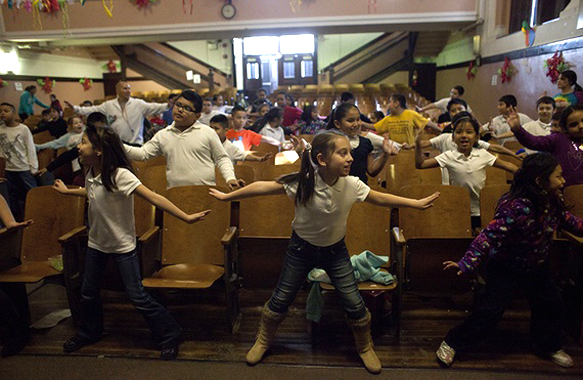Extending the School Day Is a Lot Harder Than It Seems
Photograph; Second graders at Patrick Henry Elementary School follow along to an exercise video during indoor recess. Recess was made mandatory in Chicago elementary schools when the school day was lengthened in 2012. (Armando L. Sanchez / Hechinger Report)
By Sara Neufeld | Originally Published at The Atlantic. January 21, 2014
CHICAGO–For decades, children here had one of the shortest elementary school days in the country. Students of all ages were in class fewer days than their peers not only nationally but also in much of the developed world.By Sara Neufeld | Originally Published at The Atlantic. January 21, 2014
Rahm Emanuel vowed in his successful 2011 mayoral campaign both to increase the amount of time Chicago’s students are in class and to give them a well-rounded education during their additional school hours. And by the fall of 2012, the former chief of staff to President Barack Obama had lengthened the day and year for elementary and high schools alike. Despite a budget crisis, he came up with funds to begin delivering on the second half of his promise. Schools, he said, should not have to choose between offering math or music.
But less than a year later, the estimated amount of the Chicago Public Schools’ deficit, caused largely by a crisis in pension funding, had hit $1 billion. Today, the country’s third-largest school system is still giving its 400,000 students more time to learn, but it is no longer giving more money. In fact, it is operating with fewer teachers and support staff than it was before the longer day began.
“Funding is not there for a quality day, period, no matter the length,” said Wendy Katten, director of the

